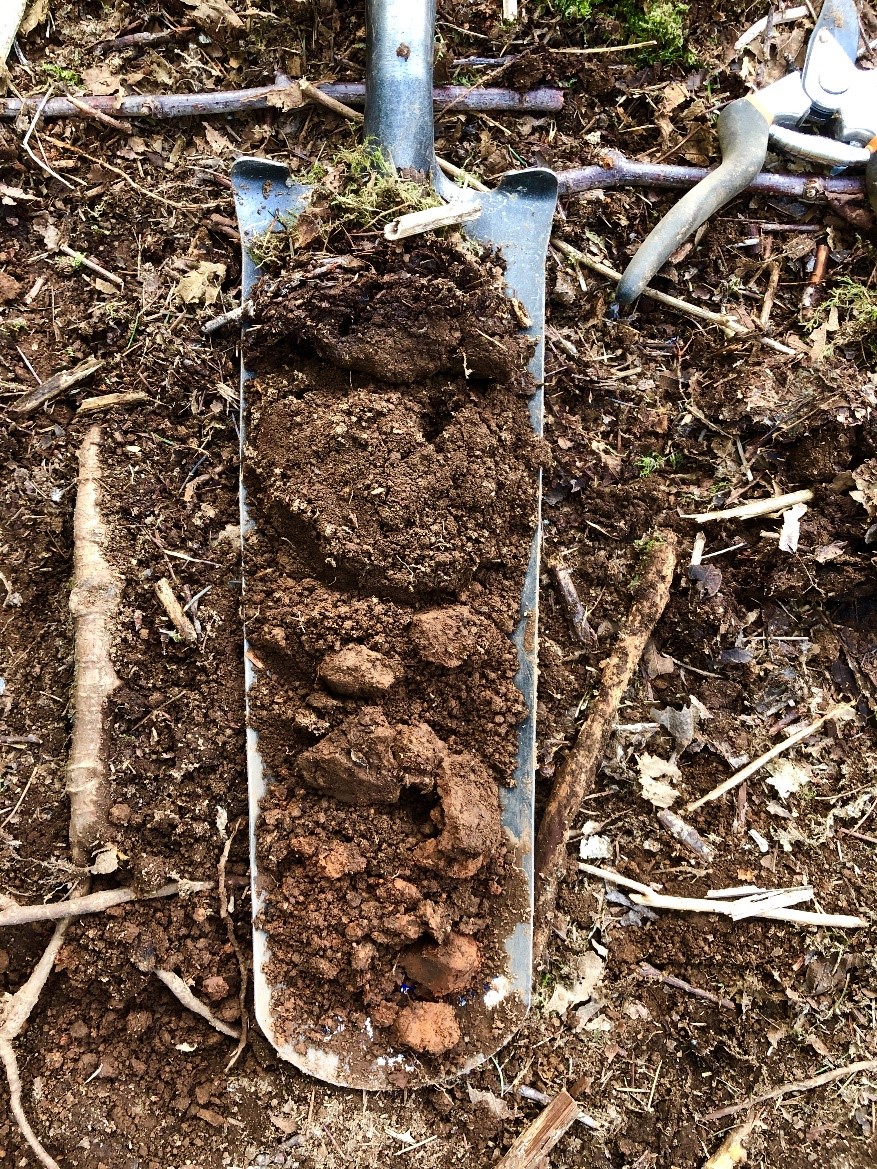June 09, 2021
Soil Moisture History Influences Soil Carbon Dynamics
Previous drought and flooding conditions strongly influence soil respiration and carbon composition.

A simulated drought caused the release of previously protected carbon, which results in greater microbial respiration when the drought-affected soils were rewet.
[Courtesy Pacific Northwest National Laboratory.]
The Science
Researchers know that soil moisture influences soil carbon dynamics but understand little about the impact of previous moisture conditions. A new experiment explored the influence of recent soil moisture history on soil carbon cycling. A simulated drought history increased carbon availability in soils compared to a simulated flood history, even after rewetting/drying and incubating the soils at the same moisture conditions. Drought caused a release of protected carbon previously bound to mineral surfaces, as well as a release of organic molecules from ruptured microbial cells. The increased availability of carbon resulted in greater microbial respiration when these drought-affected soils were rewet, whereas short-term flooding did not strongly alter soil carbon availability or carbon forms.
The Impact
As climate change intensifies the global water cycle, researchers predict that soil moisture fluctuations will become more frequent and intense. Understanding how these fluctuations will impact soil carbon processes can improve the predictive capacity of soil carbon models. This research explains changes occurring in soils during wetting and drying, which influence carbon stabilization and destabilization in soils. Soil carbon models thus must factor in the moisture history of soils to produce more accurate predictions.
Summary
Soil moisture influences soil carbon dynamics, including microbial growth and respiration. Researchers generally assume that soil response to moisture changes is linear and reversible. Current models do not account for previous, or antecedent, soil moisture conditions when determining soil respiration. Researchers conducted laboratory incubation experiments to determine how the antecedent conditions of drought and flood influenced soil organic matter chemistry, bioavailability, and respiration. Rewet soils (with antecedent drought) had greater organic carbon and respiration compared to the drying soils (with antecedent flood). In addition, simulated drought soils had the highest organic carbon concentrations, with a strong contribution from proteins found in soil microbes. Various analyses identified increased contribution of complex aromatic groups/molecules in the rewet soils, compared to the drying soils. Drying introduced organic matter into the available pool via desorption of aromatic molecules from mineral surfaces and/or microbial cell lysis, thereby stimulating microbial respiration. This work indicates that even short-term shifts in antecedent moisture conditions can strongly influence soil carbon dynamics. This improved understanding of soil water-carbon dynamics may help researchers develop more accurate predictive models.
Principal Investigator
Vanessa Bailey
Pacific Northwest National Laboratory
Vanessa.Bailey@pnnl.gov
Program Manager
Daniel Stover
U.S. Department of Energy, Biological and Environmental Research (SC-33)
Environmental System Science
daniel.stover@science.doe.gov
Funding
This research was funded as part of the Environmental System Science (formerly Terrestrial Ecosystem Sciences) program of the Office of Biological and Environmental Research (BER), within the U.S. Department of Energy’s (DOE) Office of Science.
References
Patel, K.F., et al. "Soil Carbon Dynamics during Drying vs. Rewetting: Importance of Antecedent Moisture Conditions." Soil Biology and Biochemistry 156 108165 (2021). https://doi.org/10.1016/j.soilbio.2021.108165.

